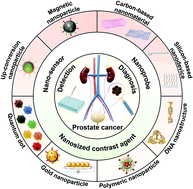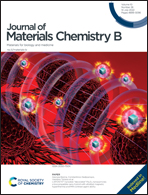Recent advances in nanomaterials for prostate cancer detection and diagnosis
Abstract
Despite the significant progress in the discovery of biomarkers and the exploitation of technologies for prostate cancer (PCa) detection and diagnosis, the initial screening of these PCa-related biomarkers using current technologies is always demanded with a bioassay or probe with high sensitivity, specificity, and noninvasiveness. Nanomaterials have emerged as novel alternative probes for PCa detection and diagnosis because of their nanoscale size, large ratio of surface area to volume, special surface chemistry, and particularly distinct physical properties. By selecting appropriate nanomaterials, a series of nanosensors or nanoprobes could be constructed for PCa bioassay with high sensitivity, selectivity, and accuracy. Meanwhile, nanosized particles also show significant potential to transport directors or contrast agents to desired sites in vivo for accurate and safe visualization of PCa tissues. Based on these advancements, this review will first outline the recent exploration of PCa biomarkers and the development of technologies for clinical PCa diagnosis. Then, the commonly used nanomaterials for PCa detection and diagnosis will be summarized. Finally, the current challenges and prospects of nanoparticle-based PCa detection and diagnosis methods are also discussed.

- This article is part of the themed collection: Journal of Materials Chemistry B Recent Review Articles


 Please wait while we load your content...
Please wait while we load your content...